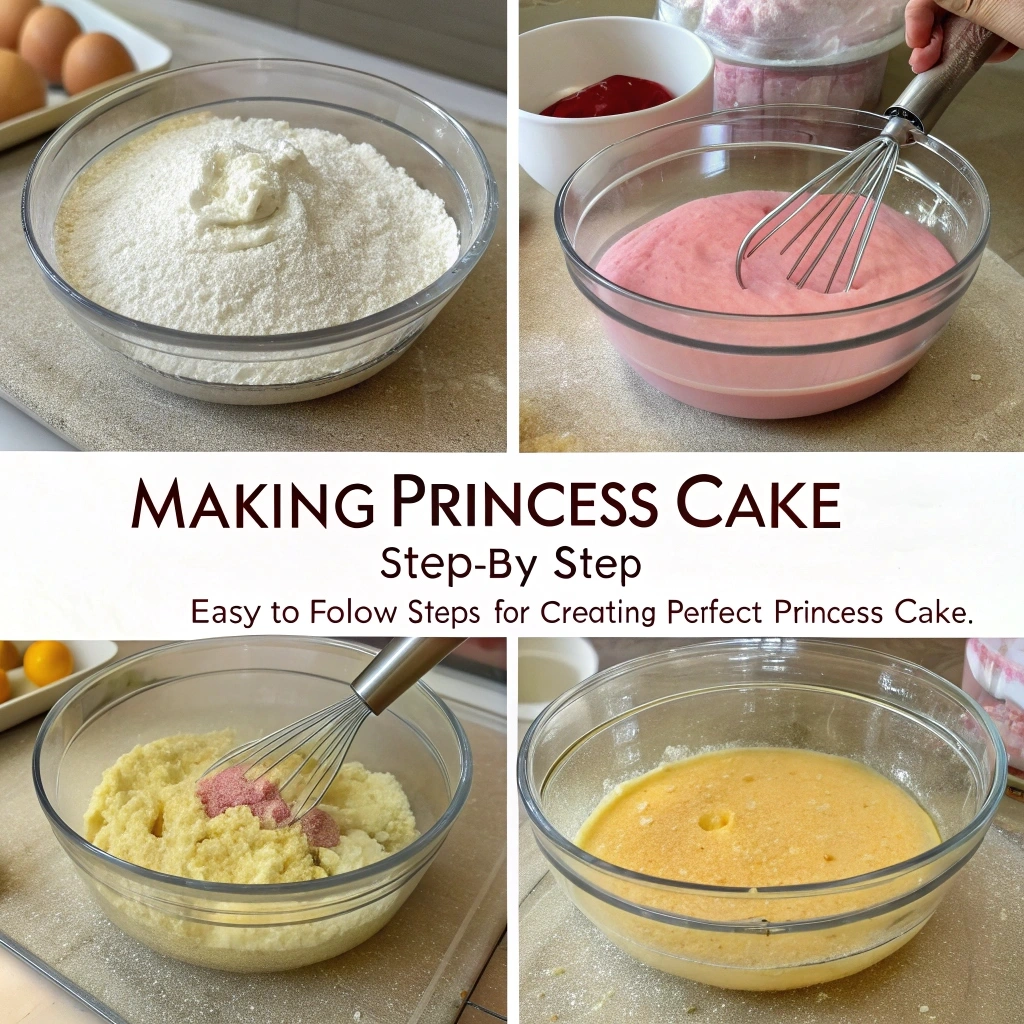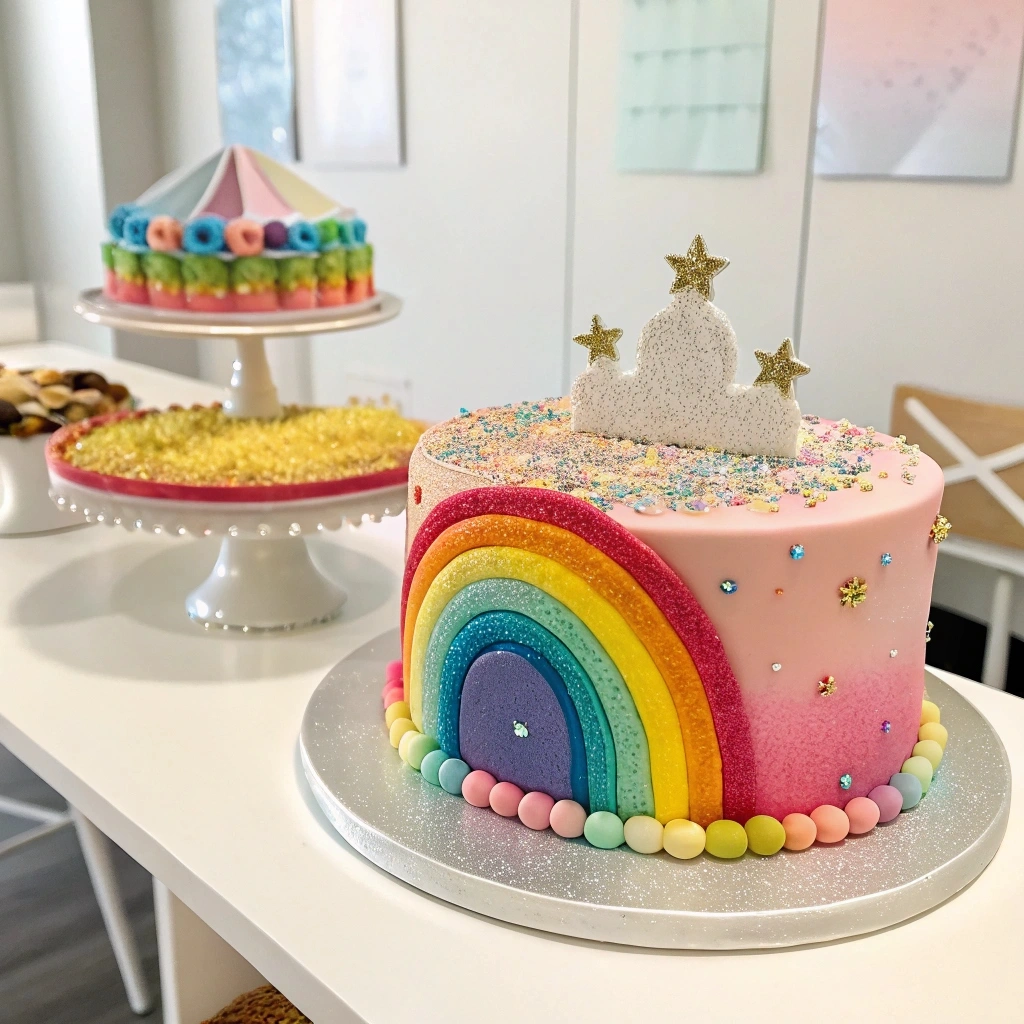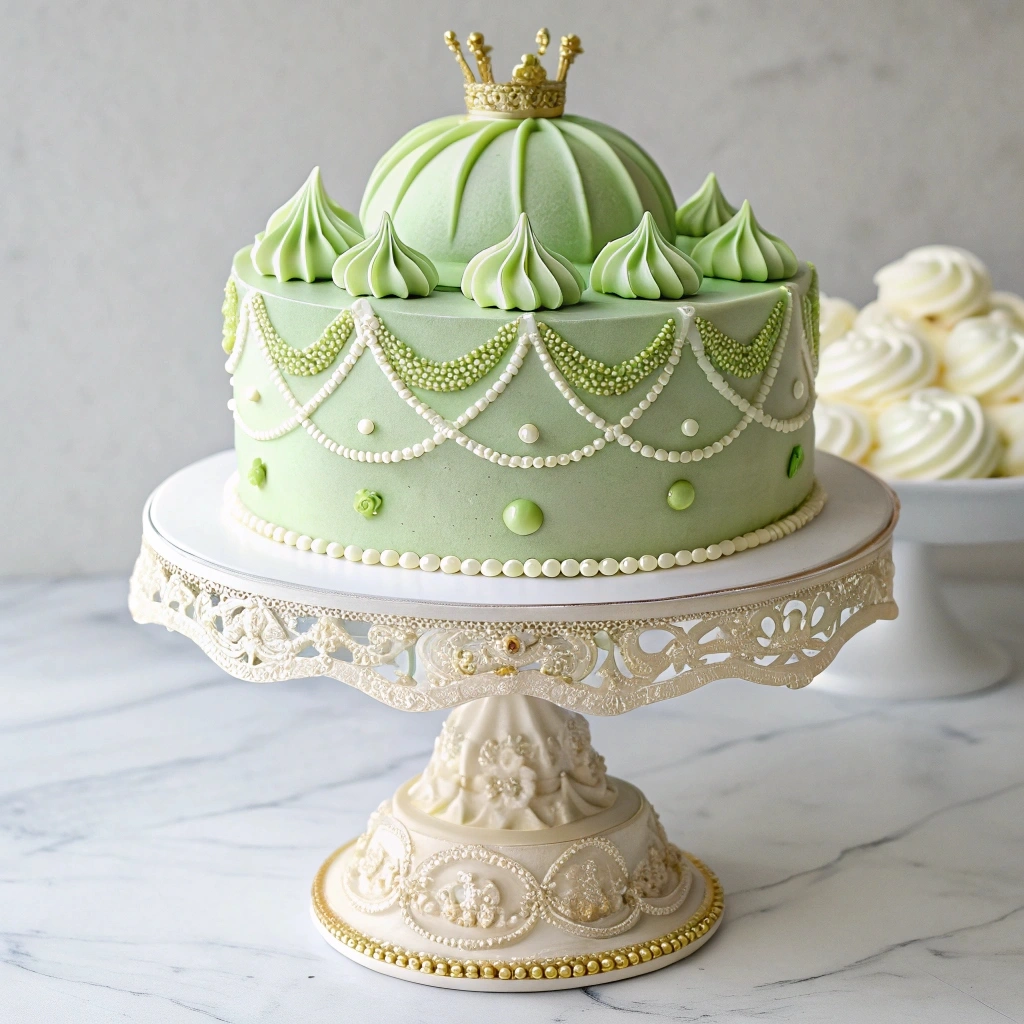Princess Cake: 7 Amazing Secrets You Need to Know
Princess cake is a delightful treat with a rich history. This elegant dessert is a Swedish classic, known for its beautiful appearance and delicate flavors. Let’s explore the fascinating world of princess cake and uncover its incredible secrets.
The Enchanting History of Princess Cake
Princess cake, or prinsesstårta in Swedish, has a captivating origin story. It was created in the early 20th century by Jenny Åkerström, a teacher to Princess Margaretha, Princess Märtha, and Princess Astrid of Sweden. Åkerström included the cake in her cookbook, and it quickly became a favorite of the princesses. Thus, the name “princess cake” was born.
The original princess cake recipe was slightly different from what we know today. Over time, the cake evolved to include a more consistent structure and a smoother marzipan covering. However, the core elements of sponge cake, pastry cream, whipped cream, and marzipan remained. This timeless dessert continues to be celebrated in Sweden and around the world. Its popularity is deeply rooted in Swedish culture. It even has its own designated week in Sweden each year! Princess cake embodies Swedish culinary traditions and continues to be a symbol of celebration and elegance.
Image Placeholder: alt text contains “Delicious Princess Cake on a Stand”
Deconstructing the Layers: Princess Cake Components
Understanding the individual components is key to appreciating the magic of princess cake. Each layer contributes to the overall texture and flavor profile, creating a harmonious balance. The components include the sponge cake, pastry cream, whipped cream, and marzipan. It’s a symphony of flavors and textures working in perfect harmony.
The Delicate Sponge Cake Base
The sponge cake forms the foundation of the princess cake. It needs to be light, airy, and moist to provide a pleasant contrast to the richer layers. Genoise or Victoria sponge cake are both excellent choices. The sponge cake should be baked to a golden brown and allowed to cool completely before assembly. Achieving the perfect sponge requires careful attention to the egg mixture, ensuring it is properly aerated. The correct oven temperature is equally important to achieve a uniform texture throughout the cake.
Creamy Pastry Cream Filling
Pastry cream, or vaniljkräm in Swedish, is a luscious custard that adds richness and depth to the princess cake. It’s typically flavored with vanilla and should have a smooth, velvety texture. Using high-quality vanilla extract or vanilla bean paste will enhance the flavor of the pastry cream. The key to creamy pastry cream lies in the slow and steady cooking process. Preventing the cream from curdling requires constant stirring and monitoring of the heat. A touch of butter added at the end contributes to its silky texture.
Light and Airy Whipped Cream
Whipped cream provides a delicate and airy element to the princess cake. It should be lightly sweetened and whipped to soft peaks to maintain its delicate texture. Be careful not to overwhip the cream, as it can become grainy. Stabilizing the whipped cream with a bit of gelatin or cream of tartar helps it hold its shape. Chilling the bowl and beaters before whipping helps to achieve maximum volume and stability. Powdered sugar is preferred over granulated sugar to avoid a grainy texture.
The Signature Marzipan Dome
The marzipan covering is what gives the princess cake its distinctive appearance. Traditionally, the marzipan is tinted a pale green color, creating a smooth, dome-shaped exterior. The marzipan should be rolled thinly and draped carefully over the assembled cake. The smoothness of the marzipan depends on the quality of the almond paste and the fineness of the sugar used. Kneading the marzipan well helps to soften it and make it more pliable for easy rolling and shaping.
Image Placeholder: alt text “Princess Cake with Green Marzipan”

The Art of Assembling the Perfect Princess Cake
Assembling a princess cake requires patience and attention to detail. Each layer must be carefully constructed to ensure a stable and visually appealing final product. The process involves layering the components and shaping the cake into its characteristic dome. Proper layering is critical for creating an eye-pleasing cake.
Layering the Components
Start by placing one layer of sponge cake on a serving plate or cake stand. Spread a generous layer of pastry cream over the sponge cake, followed by a thick layer of whipped cream. Repeat with the remaining sponge cake layers, creating a dome shape with the whipped cream. Even distribution of the pastry cream and whipped cream is key to achieving balanced flavors in every bite.
Shaping the Dome
Use a spatula or knife to gently shape the whipped cream into a smooth dome. This step is crucial for achieving the classic princess cake look. Take your time and work slowly to avoid tearing the sponge cake. A slightly dampened spatula helps to smooth the whipped cream without sticking.
The Marzipan Covering
Roll out the marzipan on a lightly dusted surface until it is thin enough to drape easily. Carefully lift the marzipan and place it over the shaped cake. Gently smooth the marzipan over the dome, trimming any excess around the base. Use your fingers to create a smooth, seamless finish. Applying a thin layer of apricot jam or simple syrup to the whipped cream dome can help the marzipan adhere better and create a glossy finish.
Image Placeholder: alt text “Assembling Princess Cake Layer by Layer”
Variations and Modern Twists on Princess Cake
While the classic princess cake remains a beloved favorite, there are numerous variations and modern twists to explore. These variations can involve different flavors, colors, and decorations, allowing for creative expression. Adapting the recipe to suit dietary restrictions or preferences is also possible. Don’t be afraid to get creative!
Flavor Innovations
Consider experimenting with different flavors in the pastry cream, such as chocolate, lemon, or almond. Adding fruit purees or extracts to the whipped cream can also create unique flavor combinations. For example, a raspberry princess cake with raspberry-infused whipped cream would be a delightful variation. Salted caramel pastry cream or passionfruit whipped cream would be interesting choices.
Colorful Creations
Instead of the traditional green marzipan, try using different colors to create visually striking princess cakes. Pink, blue, or even rainbow-colored marzipan can add a fun and whimsical touch. Edible glitter or decorative sprinkles can also be used to enhance the cake’s appearance. Airbrushing techniques can be used to create gradient effects on the marzipan.
Dietary Adaptations
Princess cake can be adapted to accommodate dietary restrictions such as gluten intolerance or veganism. Gluten-free sponge cake recipes and dairy-free pastry cream and whipped cream alternatives can be used. Marzipan is naturally gluten-free and can be made vegan by using a plant-based binder. Aquafaba (chickpea brine) can be used to create a vegan meringue for the whipped cream layer.
Image Placeholder: alt text “Different Variations of Princess Cake with Unique Colors and Decorations”
Tips and Tricks for Princess Cake Perfection
Achieving princess cake perfection requires attention to detail and a few helpful tips and tricks. These tips can help you avoid common pitfalls and ensure a successful outcome. Pay attention to ingredient quality, temperature control, and storage techniques. Practice makes perfect.
High-Quality Ingredients
Using high-quality ingredients is essential for the best flavor and texture. Choose fresh eggs, real butter, and pure vanilla extract. The quality of the marzipan is also crucial, as it significantly impacts the overall taste and appearance. Look for almond paste with a high almond content.
Temperature Control
Temperature control is important during each step of the process. Make sure the sponge cake is completely cooled before assembling the cake. Keep the pastry cream and whipped cream chilled to prevent them from melting. Work in a cool environment to maintain the integrity of the ingredients.
Storage Secrets
Princess cake is best stored in the refrigerator to maintain its freshness. Cover the cake loosely with plastic wrap or store it in an airtight container. The cake is typically best consumed within 2-3 days of assembly. Freezing the cake is not recommended as it can affect the texture of the pastry cream and marzipan.
Princess Cake Around the World
While princess cake originated in Sweden, it has gained popularity around the world. Bakeries and pastry shops in various countries have embraced this elegant dessert, often adding their own local twists. Exploring these global adaptations can offer a unique perspective on the versatility of princess cake. Each culture brings unique ingredients and techniques to the table.
Variations in Europe
In other parts of Europe, princess cake can be found with slight variations in the recipe or presentation. For example, some bakeries may use a different type of sponge cake or add a layer of jam between the sponge cake and pastry cream. The marzipan may also be decorated differently, reflecting local traditions. In Germany, it’s common to find Black Forest cake elements incorporated into princess cake recipes.
Adaptations in North America
North American bakeries often incorporate local ingredients or flavors into their princess cake creations. For example, some bakeries may use maple syrup in the pastry cream or add pecans to the sponge cake. The marzipan may also be decorated with American-themed designs. Pumpkin spice variations are popular during the fall season.
Princess Cake in Asia
In Asia, princess cake is often adapted to suit local tastes and preferences. For example, some bakeries may use green tea-flavored sponge cake or add red bean paste to the pastry cream. The marzipan may also be decorated with traditional Asian motifs. Yuzu and matcha are common flavor additions.
Troubleshooting Common Princess Cake Problems
Even the most experienced bakers can encounter problems while making princess cake. Recognizing and addressing these common issues can save time and frustration. Understanding the cause of each issue is key to finding the right solution.
Soggy Sponge Cake
A soggy sponge cake can result from oversoaking or using too much pastry cream. Ensure the sponge cake is not overly saturated with simple syrup or any other liquid. Allow the sponge cake to cool completely before assembling the cake to prevent condensation.
Runny Pastry Cream
Runny pastry cream indicates that the custard was not cooked long enough or that the starch was not properly incorporated. Cook the pastry cream until it thickens to the desired consistency. Whisk the starch vigorously into the cold liquid before adding it to the hot mixture to prevent lumps.
Cracked Marzipan
Cracked marzipan can occur if the marzipan is too dry or rolled too thinly. Add a small amount of corn syrup or glycerin to the marzipan to increase its pliability. Roll the marzipan to the appropriate thickness to prevent it from tearing.

The Enduring Appeal of Princess Cake: A Conclusion
Princess cake has endured as a timeless classic for over a century due to its elegant appearance, delightful flavors, and rich history. It’s a cake that’s both visually stunning and incredibly delicious, making it a perfect choice for special occasions or everyday enjoyment. The princess cake is a delightful way to celebrate.
Its delicate layers of sponge cake, pastry cream, and whipped cream, encased in a smooth marzipan dome, create a harmonious balance of textures and flavors. The cake’s elegant appearance makes it a centerpiece for any celebration, while its delightful taste satisfies even the most discerning palate. Whether you are making it for yourself or others, it is sure to be a hit!
Furthermore, princess cake’s rich history adds to its allure. Created for Swedish royalty, the cake carries a sense of tradition and sophistication. This combination of beauty, flavor, and history ensures that princess cake will continue to be cherished for generations to come. Its versatility also contributes to its lasting appeal. The ability to customize flavors, colors, and decorations makes it a dessert that can be adapted to suit any occasion or personal preference. From traditional green marzipan to modern rainbow-colored variations, the possibilities are endless. The princess cake’s enduring appeal is a testament to its perfect balance of taste, aesthetics, and history. It remains a beloved classic for all the right reasons.
FAQ
What is princess cake made of?
Princess cake is made of sponge cake, pastry cream, whipped cream, and marzipan. These components create a delightful combination of textures and flavors.
How do you store princess cake?
Store princess cake in the refrigerator to maintain its freshness. Cover it loosely with plastic wrap or store it in an airtight container. It is best consumed within 2-3 days.
Can princess cake be made gluten-free?
Yes, princess cake can be made gluten-free by using gluten-free sponge cake recipes and ensuring that all other ingredients are gluten-free.
What is the origin of princess cake?
Princess cake originated in Sweden in the early 20th century. It was created by Jenny Åkerström, a teacher to Swedish princesses.

